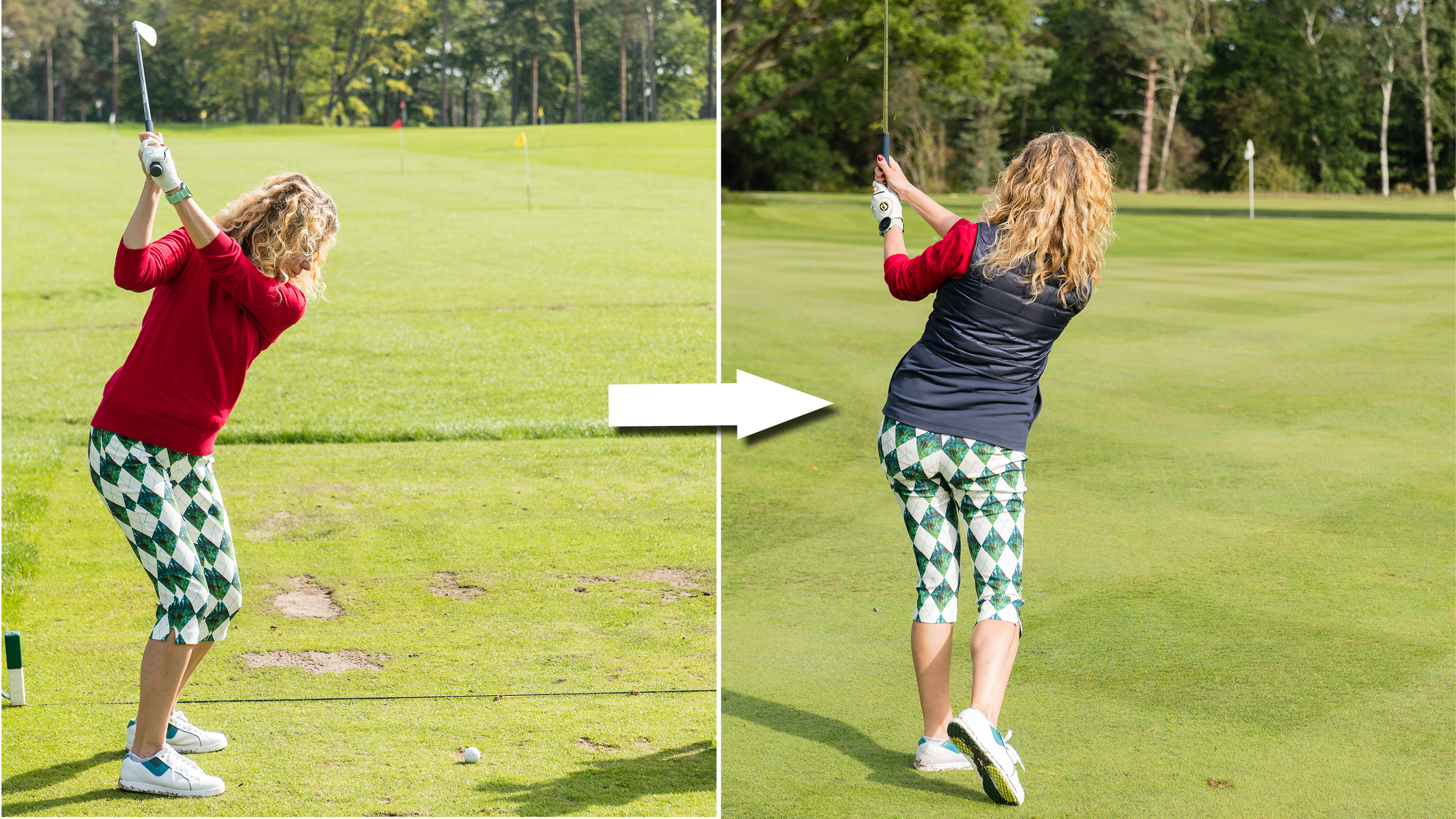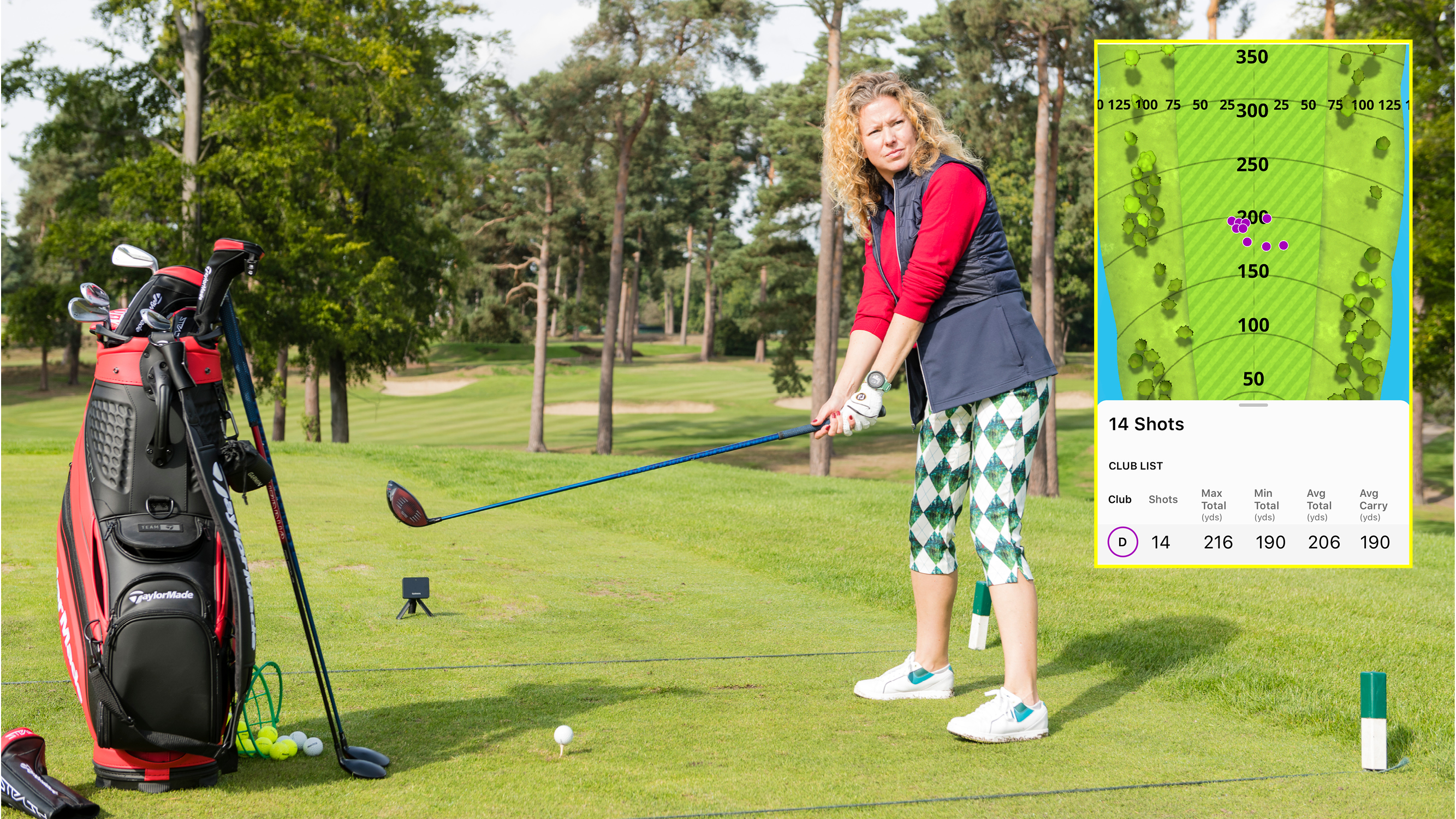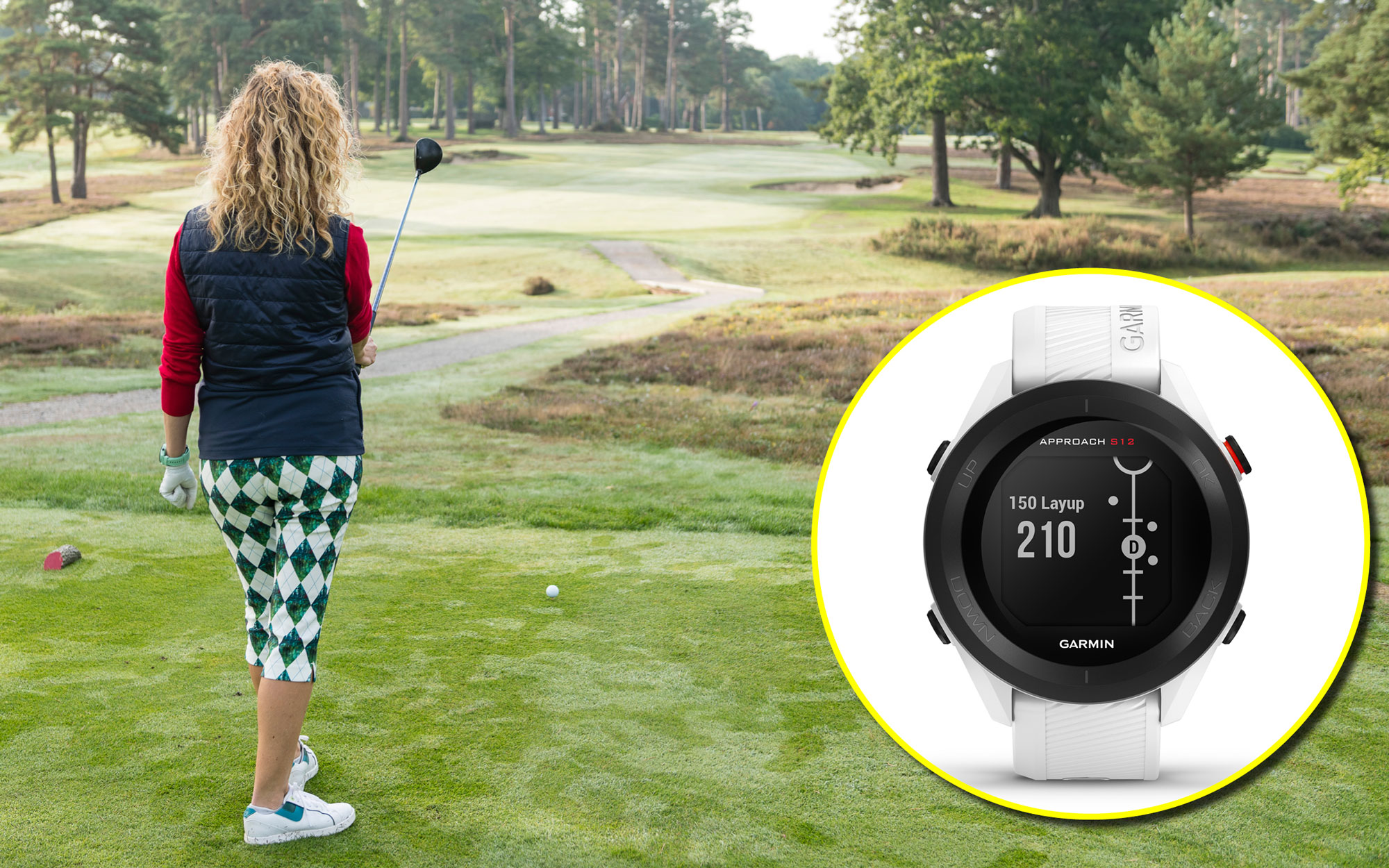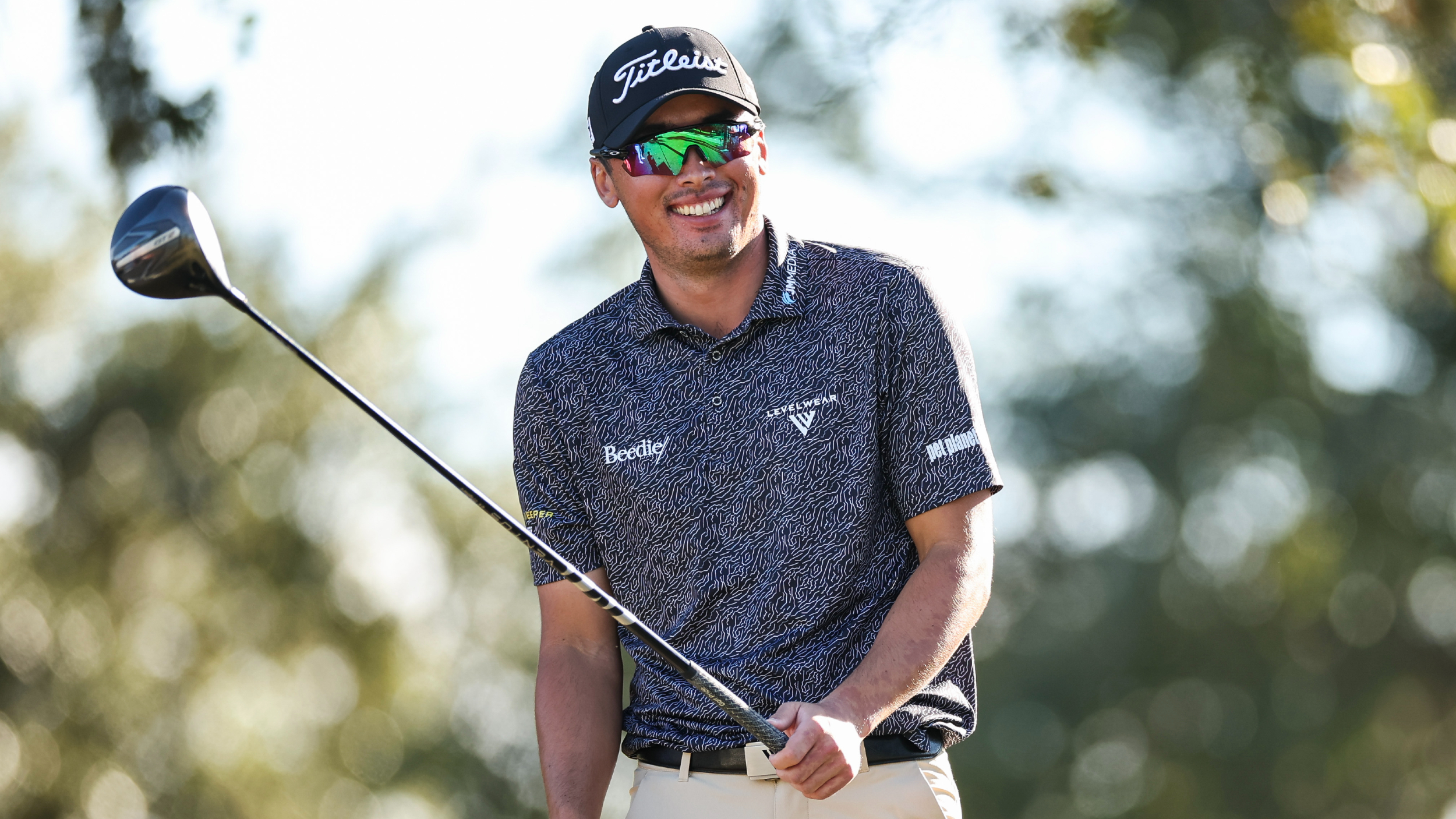How To Take Your Game From The Range To The Course
Top 50 Coach, Katie Dawkins, offers her advice for how to take your game from the range to the course


It’s something a lot of golfers struggle with: taking their golf game (a good one) from the range to the course. We’ve all been there – we strike the ball beautifully during practice, only to struggle to replicate that form when it matters. There’s a consequence when we play for ‘real’ – in a competition, or even just a weekend rollup. Compare that to the range, where you have a big expanse of land to hit into – and there’s just not that same kind of pressure. Don’t despair. In the video and article below are my top tips and advice on how to take your game from the range to the golf course.
Off The Tee (Range)
The mistake players make is they take a totally different approach to the shots they hit on the range. You can prepare for the pressure of competition by going through your pre-shot routine ahead of every single shot you hit on the range. I’ll walk behind the ball, prepare myself, rehearse the swing, and then come in and hit the shot exactly how I do on the course. Get into the habit of using your pre-shot routine on the range. It requires a bit of discipline, but on the course it can act like a safety blanket, settle you down, and really help you to focus on the shot that you’re preparing to hit.
I use my range time to do my preparation with each driving club. One of the keys is to find out the average carry with my driver, fairway, and hybrid – perhaps a long iron as well. Discovering your average carry number is the key – don’t make that mistake of going off your absolute best strike. You should also use this time to get a picture for your typical shot dispersion - do you most often miss right or left? This will help you build a strategy when you get onto the course.

The Garmin Approach R10 portable launch monitor offers carry distances and shot tracking that can help you build a more detailed picture for your game off the tee. The graphic above, taken from the Garmin App, shows Katie's driving data from her range session. On the course, Garmin's Approach S62 (when used with the brand's CT10 shot tracking sensors) will provide you with dispersion information and average distances for all the clubs in your bag. This is important information as it relates to your performance when playing for real.
Off The Tee (Course)
When you are stood on the tee on the course, you need to gather the key information. What is it to carry certain bunkers or penalty areas? What is the wind doing? Where is the most dangerous trouble? The homework you did on the range will then help you pick a sensible strategy to avoid trouble.
This is where the concept of having a ‘personal par’ comes into play. It’s easy to stand on the tee, look at the scorecard, see a par 5, and tell yourself that you have to get the ball in the hole in five shots. You have a handicap for a reason. If, for example, you have a handicap of 18, your ‘personal par’ on the hole isn’t five – it’s six. With this in mind, you can start to devise yourself the safest route up that hole taking into account the shots you like to hit and the clubs that you feel comfortable with.
Subscribe to the Golf Monthly newsletter to stay up to date with all the latest tour news, equipment news, reviews, head-to-heads and buyer’s guides from our team of experienced experts.
For the shot I'm facing here, in the distance there is a white post. I’ve purposefully picked a target beyond my landing area as it helps me to visualise a good shot. By focusing on something in the distance, it takes the focus off the trouble I’m trying to get over.

This is where knowing the lay-up yardage, as shown here on the Garmin Approach S12 watch, can really help. Another helpful option is to use the full colour hole maps of the Garmin Approach S62 - you can then hone in on the area that you're looking to land your ball. With the brand's CT10 shot tracking you can also receive advice from the the watch through its Virtual Caddie functionality.
Ball Striking (Range)
If there’s one drill I can recommend on the range to improve your ball striking, it’s this one: simply pop a tee peg down in front of the ball, or something similar, as I’m doing in the video above. Having this focus in front of the ball with help you to groove that right angle of attack for a ball then turf contact; it’ll help you to stay lower for longer for purer strikes.
As with your game off the tee, it is also worth working through your bag and gathering your average carry distances for each club. For me, total distance is less important, because there are so many variables that come into play, such as how soft/hard the ground is. When you know your average carry, you know exactly what club you need to get over hazard.
Ball Striking (Course)
If you’ve done the above drill on the range, you’ve helped to build your awareness of what’s just ahead of your ball, which, as I show in the video, is going to help you to stay lower for longer – to get the little ball before the big ball!
Although you obviously can’t put an object down in front of your ball when you’re out playing on the course, you can still focus on a spot just ahead of it – and you can even pick something ahead of the ball, maybe a small leaf, or a divot mark. I’m fortunate, as I have a bit of dew on the ground as you can see below, which, when I take a practice swing, shows me that I’d have struck the ball cleanly, with a divot mark coming after the ball.

Picking a spot just in front of your ball to focus on will help you get the club bottoming-out in the right place for better strikes. In addition, the Garmin Approach R10 portable launch monitor tracks ball-striking. The Smash Factor reading (available in the Garmin App) provides you with an understanding for how well each shot has been hit.
In terms of club selection, again, I’m going by my average carry distances to pick a club that carries any danger – and I’m focused on hitting the middle of the green, which will give me a chance of a birdie, and hopefully a two-putt par at worst.
Pitching (Range)
We’ve heard it a million times: pitching is your scoring zone. There’s no getting away from it – you have to put some practice in on the range to reap the rewards on the course. First of all, you need to know how far you hit your wedges with a full swing. It amazes me just how many amateur golfers don’t know this – or they have a really approximate figure. Hit some full wedge shots with your wedges and, again, make a note of your average carry distances.
To get really good at pitching – and to give yourself a bunch more looks at birdie – you need to add an extra dimension. So, the next step is to hit a series of half swing pitches with your wedges.
To help control the length of your swing, I recommend thinking of a clock face. Your head is 12 o’clock. Try swinging back to 9 and through to 3. Make a note of your average carry with each wedge. You can even try this with all of your irons - see what happens to the flight and carry distance. Going through this process will give you options when you reach the course.
Pitching (Course)
Now you have some options. For instance, I know if I hit a good sand wedge, it’s going 75-80 yards. However, I can hit it the same distance with a 9-iron, swinging the club with that visual of 9-to-3. The ball will fly lower and roll out a little bit more, but it’s still a very safe shot to be able to call upon.

As the Garmin Approach S12 watch is showing, I have 71 yards to the middle and 83 yards to the back. Having two different ways of playing this shot will help me get the ball close in different conditions
The shorter swing with less loft may well be the safest option here – there’s a lot less that can go wrong! Even if I catch the shot slightly thin, there’s less swing going on to get me into trouble. Of course, like most shots, it requires practice on the range. However, if you can give yourself more options from this kind of distance, you’re bound to shoot lower scores.

Katie is an Advanced PGA professional with over 20 years of coaching experience. She helps golfers of every age and ability to be the best versions of themselves. In January 2022 she was named as one of Golf Monthly's Top 50 Coaches.
Katie coaches the individual and uses her vast experience in technique, psychology and golf fitness to fix problems in a logical manner that is effective - she makes golf simple. Katie is based in the South of England, on the edge of the New Forest. An experienced club coach, she developed GardenGOLF during lockdown and as well as coaching at Iford Golf Centre, The Caversham- Home of Reading Golf Club and Salisbury & South Wilts Golf Club.
She freelances, operating via pop-up clinics and travelling to clients homes to help them use their space to improve.
She has coached tour pros on both LET tour and the Challenge Tour as well as introduced many a beginner to the game.
Katie has been writing instructional content for magazines for 20 years. Her creative approach to writing is fuelled by her sideline as an artist.
Katie's Current What's In The Bag
Driver: TaylorMade Qi10 9degrees.
Fairway: TaylorMade Qi10 5wood
Hybrid: TaylorMade 4 & 5
Irons: TaylorMade 770 6-AW
Wedges: TaylorMade Tour Grind 4 54 & 58
Putter: TaylorMade Tour X 33"
Favourite Shoes: FootJoy HyperFlex with Tour Flex Pro Softspikes on the course.
-
 'Travelling Back And Forth To America 30 Weeks Of The Year Isn’t Sustainable' - Laurie Canter Explains Decision To Turn Down PGA Tour For LIV Golf Return
'Travelling Back And Forth To America 30 Weeks Of The Year Isn’t Sustainable' - Laurie Canter Explains Decision To Turn Down PGA Tour For LIV Golf ReturnThe two-time DP World Tour winner has explained his decision to turn down the PGA Tour in favor of LIV Golf to The Times
-
 AJ Ewart Tops Leaderboard To Earn One Of Five PGA Tour Cards In Thrilling Final Round Of Q-School
AJ Ewart Tops Leaderboard To Earn One Of Five PGA Tour Cards In Thrilling Final Round Of Q-SchoolFive PGA Tour cards are up for grabs at Q-School and we're heading for a playoff to decide the final recipient